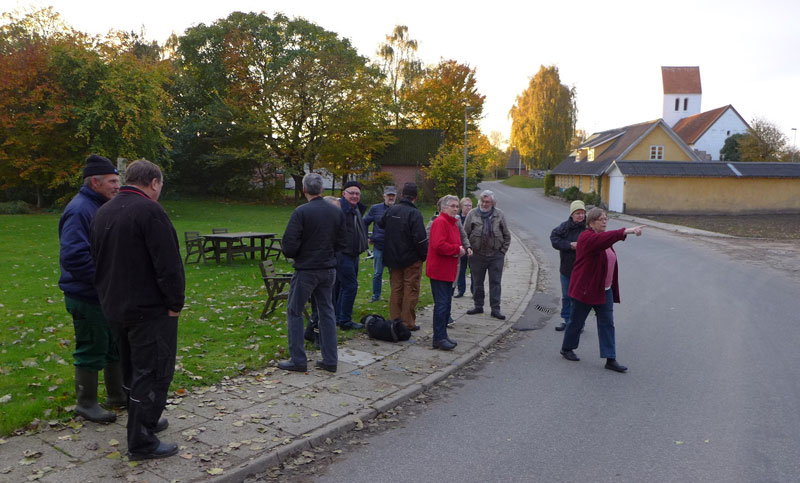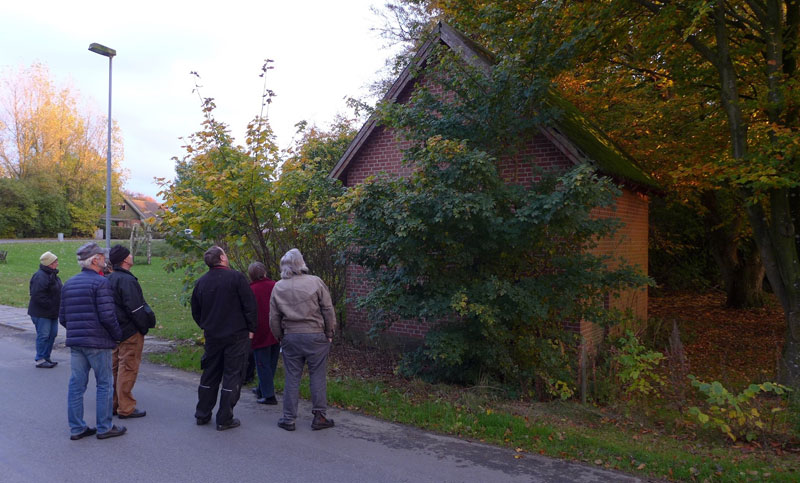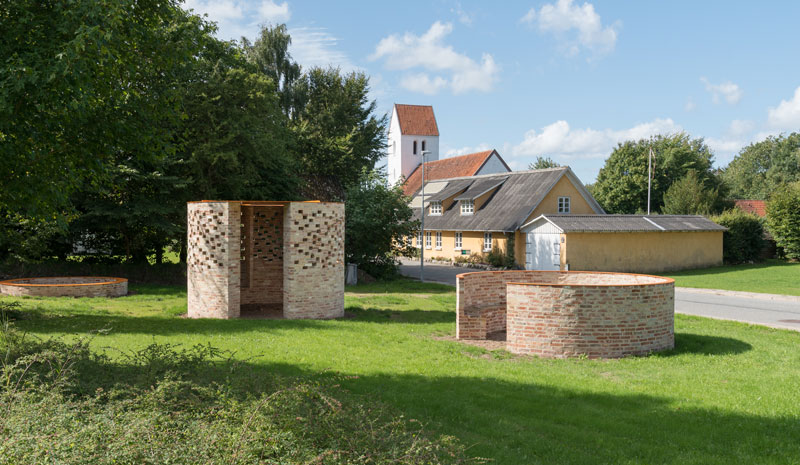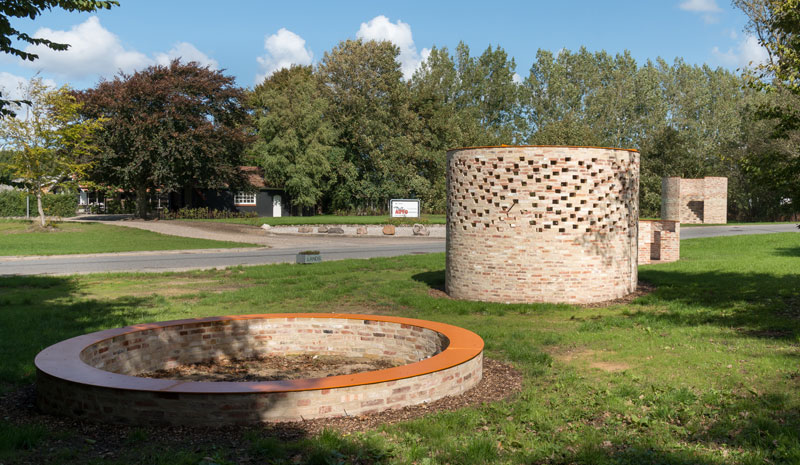
Text from the publication
Grasslands
Interview with the residents of Junget
by Trine Rytter Andersen
Represented by Solvej Sieg and Ulla Simonsen, who chose to meet me outdoors in the new village park that has been created as a part of Grasslands. The conversation took place in one of the open, sculptural spaces, constructed of local yellow bricks from demolished houses that formerly occupied the current site of the park.
WE WANT IT OUR WAY
We got off on a slightly bad footing in the beginning here. “Assault” is probably a bit too strong of a word, but if you want a collaboration, then that requires dialogue, and a “softly, softly” approach in the beginning, and a certain amount of openness and curiosity in who you might be working with, and what kind of place it is, might have been a good idea.
Here where we are now sitting was originally the site of the houses waiting for demolition and as it turned out, Grasslands had already in their pre-project phase bought the bricks from those buildings.
This came as something of a surprise to us, and it’s no secret that we dug our heels in, for the simple reason that we wanted to be acknowledged for our own initiatives and care of the village, and because we basically believe that ideas that develop from the base upwards, are the most sustainable. On their own initiative, residents have been looking after the area over the years and therefore they also had some ideas about its future use. One of the ideas we had considered for this area was the creation of a space for communal dining – an area for barbecues or something similar – so the idea of a village park was already in the offing.


Facts instead of abstract ideas
We were invited to some preparatory meetings, where Lene and Birgitte presented Grasslands and explained some of the ideas behind the project. All three villages were invited and Grasslands showed a willingness at that time to listen to the residents. However, it’s probably a distinguishing characteristic of the area out here, that people are basically very practically orientated: they think in specifics and most of them want facts instead of abstract ideas. So, in the beginning it was a bit of an uphill battle.
We discover the history of the area
Later, Lene ran a series of workshops, where we recognised the historical qualities of the area and how we might connect the story of the old brickworks that used to be right here, with the present. It was exciting and an eye-opener for all of us and suddenly it made sense that Lene and Birgitte had had the foresight to buy the bricks when the buildings were demolished.
Artist or facilitator
But when Birgitte came up with the idea of paving over areas that corresponded to the foundations of the original houses, problems arose. She wanted to be an artist first and project manager second, and was way too taken with putting her personal artistic fingerprint on something that was very far removed from what we had discussed in our meetings.

A verbal clash
You can’t do that kind of thing here so we closed ranks and resisted. It ended with a very verbal clash and Birgitte was clearly shaken when she left the meeting. We, on the other hand, waited for the dust to settle and to see what Birgitte would decide and how Grasslands would get back to us. We waited for a while and agreed that if the collaboration had ended then we would go ahead and build our hut and small barbecue, just as we had originally intended.
Fortunately the collaboration continued
Happily, Birgitte dusted herself off, and she and Lene returned, with more focus on us. Things begin to take shape in a way where we felt more involved and we became more and more appreciative of what was happening. From the beginning we had an enormous focus on the project’s sustainability, because the maintenance and upkeep of the park rests on a little group of “the same old people”. We’re not complaining about that, it’s simply a condition that we accept. But we do want to support a project like this. It’s good, and fun, to do something together that you can enjoy afterwards. And it’s no secret either that when the plans for this park where finalised there wasn’t a dry eye in the house – everyone was looking forward to it.
Everything we wanted
This place is so wonderful – it’s a little park now. Notice how the recently planted beech hedge is watered, here in the summer heat as we sit here chatting. The area contains all the functions we original wanted: space for a bonfire, barbecues, places to sit, sheltered from the wind and viewpoints with sun-heated bricks to sit on. At the inauguration everything was perfect. EVERYONE was glad and everyone lent their participation and support. It was a wonderful party day!


A place we share with others
The park is now in use and we are creating new traditions here. For example, our Midsummer Night’s bonfire will take place here. Gradually the space has begun to take shape for the residents and people from neighbouring areas – we have put a lot of effort into signalling to the community that this is a public place and you are allowed park and sit down.
So now we are quietly working away at the idea of a tiny, little local museum about the demolished houses in a microscopic dilapidated ice house, here beside the park. Not everyone has changed their opinion on art and artists – because the process was so unsightly, many prejudices live on.
After the rain comes the sun
We wouldn’t have ended here without art as a catalyst, and it was good and instructive for everyone that a process can go so horribly wrong and yet come on an even keel again. We wouldn’t have arrived at this solution without the artists’ intervention and for that we are grateful.
But we have to conclude that we are very obstinate people in Junget, who won’t be led like a horse to water by either the authorities or artists. We wanted it our way and we got it.
